United States Passport Card
| United States Passport Card | |
|---|---|
 The front of a United States passport card. | |
| Date first issued | July 14, 2008 |
| Issued by |
|
| Type of document | Passport card |
| Purpose | Identification |
| Eligibility requirements | United States nationality |
| Expiration | 10 years after acquisition for people at least age 16; 5 years for minors under 16 |
| Cost |
$30 (adults) / $15 (minors under 16) $25 execution fee (required for all minor cards and an adult's first passport)[1] |
The passport card (previously known as the People Access Security Service Card, or PASS Card) is an alternative to a passport produced in the United States to meet the documentary requirements of the Western Hemisphere Travel Initiative (WHTI). The U.S. Passport Card is a credit card–sized travel document, issued to U.S. citizens and non-citizen nationals,[2] that can be used as a easy carrying Identity document issued by the United States government and to enter the United States from Bermuda, Canada, Mexico and some Caribbean countries at land border crossings or sea ports-of-entry and is more convenient and less expensive than a passport book. The passport card cannot be used for international air travel. However it can be for domestic air travel inside the United States.[3]
Applications have been accepted since February 1, 2008; production of the cards began July 14, 2008. By the end of 2015, more than 10 million Passport Cards have been issued to U.S. citizens.[4] The card is manufactured by L-1 Identity Solutions.[5] National identity cards with similar utility are common inside the European Union for both national and international use.
History
As a result of the September 11 attacks, the United States began implementing a range of measures to increase the security of its borders and its identity documents. One result of this was WHTI, which mandates that a smaller, more secure number of documents verifying both identity and citizenship be used to facilitate international border crossing. Previous to WHTI, many different types of documents were acceptable to cross the border, including birth certificates issued by thousands of different authorities within the United States and Canada. As a result of WHTI, American citizens traveling to Canada would have been required to obtain a passport booklet in order to cross the border. In order to offer a less expensive and more portable alternative to border communities and frequent travelers, the passport card was developed.
In an effort to improve efficiency at land crossings, the passport card also includes a vicinity-read radio frequency identification chip with a unique identifying number tied to government databases. Unlike the passport book, the RFID chip in the passport card is designed to be readable at a greater distance, allowing border agents to access traveler information before they pull up to the inspection station. While a biometric passport contains a chip containing all of the traveler's information in electronic format, the RFID chip in a passport card does not contain any personal information beyond the identifying number, which is used to locate records in secure government databases. To prevent the RFID chip from being read when the card is not being used, the passport card comes with a sleeve designed to block RFID while inside.[6]
Usage
The passport card is limited travel document, valid only for land and sea travel within North America (Canada, Mexico, the Caribbean, and Bermuda). It cannot be used for international air travel. The Department of State indicates that this is because "designing a card format passport for wide use, including by air travelers, would inadvertently undercut the broad based international effort to strengthen civil aviation security and travel document specifications to address the post 9/11 threat environment."[7]
Aside from being unable to be used for international air travel, the passport card is treated as a passport for all other purposes. A United States passport card can be used as primary evidence of United States citizenship, just like a passport booklet,[8] and can be used as a valid proof of citizenship and proof of identity both inside and outside the United States.[9] However, the acceptance of the passport card as an identity document by both private and governmental entities within the USA varies greatly, due to its unfamiliarity with many people.
Under the REAL ID Act, the passport card is also accepted for federal purposes (such as domestic air travel or entering federal buildings), which may make it an attractive option for people living in states whose driver's licenses and ID cards are not REAL ID–compliant when those requirements go into effect. TSA regulations list the passport card as an acceptable identity document at airport security checkpoints.[10] For the purposes of state voter photo identification initiatives, the passport card has been deemed acceptable.
U.S. Citizenship and Immigration Services has indicated that the U.S. Passport Card may be used in the Employment Eligibility Verification Form I-9 process.[11] The passport card is considered a “List A” document that may be presented by newly hired employees during the employment eligibility verification process to show work authorized status. “List A” documents are those used by employees to prove both identity and work authorization when completing the Form I-9.
Validity and fees
The passport card will share the same validity period as the passport book: 10 years for persons 16 and over, 5 years for children under 16. As of July 13, 2010, the passport card renewal fee for eligible applicants (adults only, by mail) is $30; first-time applicants and those applying in person must also pay a $25 processing fee, for a total fee of $55. Passport cards for children must be applied for in person; the total fee is $40, including the $25 processing fee.
Adults who already have a fully valid passport book may pay a fee of $30 to apply for the card as a passport renewal.
A citizen or national is allowed to hold both a card passport and a booklet passport. A passport in either form entitles its holder to apply for the other form (or both forms) as a "renewal" by mail at the end of its validity period.
Card layout
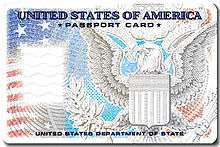
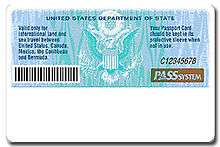
The passport card is formatted according to specifications for credit card (ID-1) sized travel documents, as described in ICAO Document 9303, Part 3, Volume 1. The card contains both human-readable and machine-readable information; the latter is printed in the machine-readable zone on the rear of the card as OCR-readable text in a similar format as on the identity page of the passport book. The zone starts with the letters IP (designated by ICAO for passport card[12]), followed by the issuing country code USA and then the Passport Card's serial number (which is prefixed with a "C" and differs from the individual's passport book number, even if issued together). The general layout of the Passport Card is virtually identical to the layout of the Border Crossing Card issued to Mexican citizens with primarily the background imagery and entitlements varying between the two cards.
Anti-counterfeiting features
In addition to the embedded RFID chip, the front of the card features a complex multi-layer hologram consisting of an American bald eagle surrounded by the words "United States of America Department of State" in a small clearly readable font, further surrounded by the same words repeatedly in microprint. The card's background consists of interweaving smooth curves rich in variable color and microprint. All the personal information on the card is created by laser engraving, with some key information produced in raised tactile engraving, including the date of birth, vertical letters "USA", the passport card number, and an alphanumeric sequence underneath the photograph. A second, smaller "ghost" photograph of the bearer is included on the right side of the card; when closely inspected this ghost image is actually an approximation of the shading in the original photo composed of various letters from the card holders name. There is an embossed seal in the upper left hand corner of the card (partially overlapping the photograph) depicting the obverse of the Great Seal of the United States. On the rear of the card, the "PASSsystem" mark appears in Optically variable ink. When viewed under UV lighting, a reddish-orange bald eagle in flight appears. On newer passport cards, the eagle is surrounded by a blue ring that reads "From Sea To Shining Sea".
Use
U.S. Passport Cards can be used at land border-crossings or sea ports-of-entry only to member states and territories of the Western Hemisphere Travel Initiative, namely:
 Canada
Canada Mexico
Mexico Bermuda
Bermuda Anguilla
Anguilla 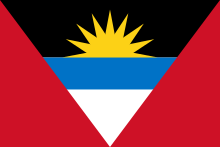 Antigua and Barbuda
Antigua and Barbuda Aruba
Aruba the Bahamas
the Bahamas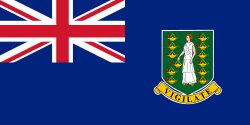 British Virgin Islands
British Virgin Islands Caribbean Netherlands (of Bonaire; Sint Eustatius and Saba; Curaçao; Sint Maarten)
Caribbean Netherlands (of Bonaire; Sint Eustatius and Saba; Curaçao; Sint Maarten)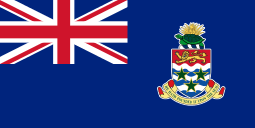 Cayman Islands
Cayman Islands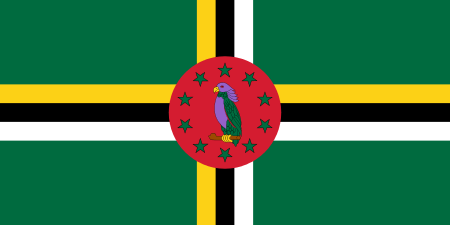 Dominica
Dominica Dominican Republic
Dominican Republic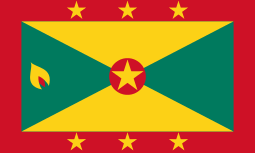 Grenada
Grenada Jamaica (except for business travel)
Jamaica (except for business travel)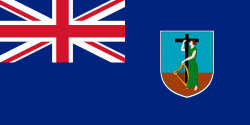 Montserrat
Montserrat Saint Kitts and Nevis
Saint Kitts and Nevis Saint Lucia
Saint Lucia Saint Vincent and the Grenadines
Saint Vincent and the Grenadines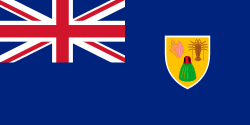 Turks and Caicos Islands
Turks and Caicos Islands
The U.S. Passport card is accepted for land travel by the immigration authorities of Canada and Mexico.[13][14][15] The U.S. Passport Card is not valid for international air travel.[3][16]
Several countries and territories are not participating in the WHTI, and the U.S. Passport Card cannot be used when entering the U.S. from these places even though they are considered part of the Caribbean. These are
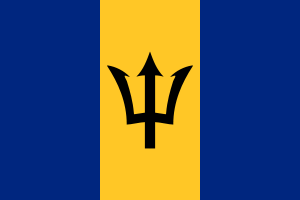 Barbados
Barbados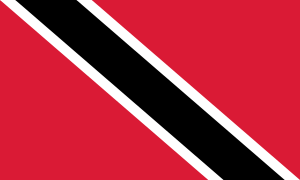 Trinidad and Tobago (opted out)
Trinidad and Tobago (opted out) Haiti (considered too unstable)
Haiti (considered too unstable) Cuba (embargoed)
Cuba (embargoed) French West Indies, composed of Guadeloupe, Martinique, Saint Barthélemy, and Saint Martin (under French sovereignty)[15]
French West Indies, composed of Guadeloupe, Martinique, Saint Barthélemy, and Saint Martin (under French sovereignty)[15]
References
- ↑ "Passport Fees".
- ↑ Passport Application Form DS-11 (Accessed December 2, 2013)
- 1 2 "U.S. Passport Card". U.S. Department of State, Bureau of Consular Affairs. Retrieved 10 June 2014.
- ↑ "Passport Statistics". travel.state.gov. United States Department of State. Retrieved 2016-09-21.
- ↑ Passport Card & Border Crossing Card Solutions. Retrieved 24 May 2011
- ↑ U.S. Passport Card. Retrieved February 5, 2009.
- ↑ Federal Register, Volume 71 Issue 200 US Government Printing Office October 17, 2006 (Accessed Aug 4, 2010).
- ↑ "42 CFR 435.407 - Types of acceptable documentary evidence of citizenship.". LII / Legal Information Institute. Retrieved 2016-09-21.
- ↑ Passport Card
- ↑ Driver's License or Passports Preferred ID at Checkpoints, retrieved May 30, 2008.
- ↑ "USCIS Informs The Public That New Passport Card Is Acceptable For Employment Eligibility Verification". USCIS.
- ↑ see page V-11 of ICAO9303 part 3
- ↑ "Caribbean Region". Archived from the original on 31 October 2013.
- ↑ "Western Hemisphere Travel Initiative". Archived from the original on 5 November 2013.
- 1 2 Jared Paventi, Demand Media. "Which Caribbean Countries Require a Passport?". Travel Tips - USA Today.
- ↑ "Frequently Asked Questions". U.S. Department of State, Bureau of Consular Affairs. Retrieved 10 June 2014.
Further reading
- Advisory and technical committee for communications and transit. Replies of the governments to the enquiry on the application of the resolutions relating to passports, customs formalities and through tickets. Geneva: League of Nations. 1922. OCLC 46235968.
- Holder IV, Floyd William (Fall 2009). An Empirical Analysis of the State’s Monopolization of the Legitimate Means of Movement: Evaluating the Effects of Required Passport use on International Travel (M. P. A. thesis). San Marcos: Texas State University. OCLC 503473693. Docket Applied Research Projects, Paper 308.
- Lloyd, Martin (2008) [2003]. The Passport: The History of Man's Most Travelled Document (2nd ed.). Canterbury: Queen Anne's Fan. ISBN 978-0-9547150-3-8. OCLC 220013999.
- Salter, Mark B. (2003). Rights of Passage: The Passport in International Relations. Boulder, Co: Lynne Rienner Publishers. ISBN 978-1-58826-145-8. OCLC 51518371.
- Torpey, John C. (2000). The Invention of the Passport: Surveillance, Citizenship and the State. Cambridge studies in law and society. Cambridge: Cambridge University Press. ISBN 0-521-63249-8. OCLC 59408523.
- United States; Hunt, Gaillard (1898). The American Passport; Its History and a Digest of Laws, Rulings and Regulations Governing Its Issuance by the Department of State. Washington: Govt. print. off. OCLC 3836079.
External links
- Fact Sheet: Western Hemisphere Travel Initiative (WHTI) Passport Card Technology Choice: Vicinity RFID Release Date: October 17, 2006
- Fact Sheet: US Passport Card Release Date: January 8, 2008